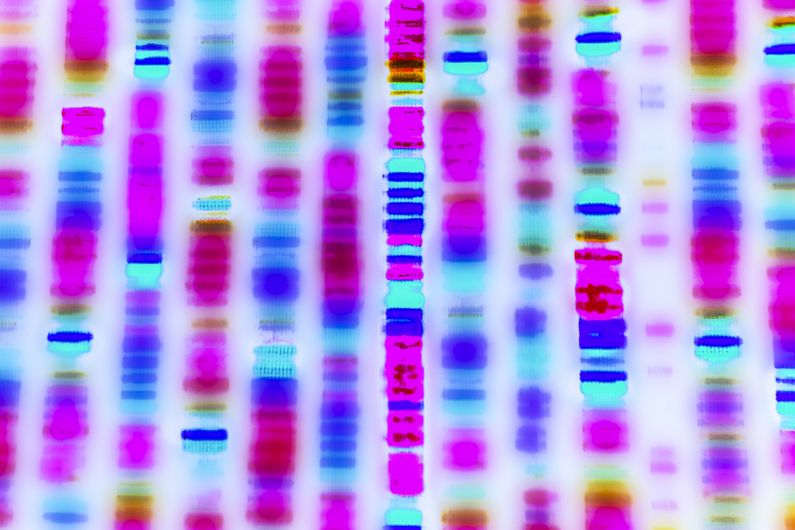Hidden gene pokes holes in preconceptions
- UdeMNouvelles
07/11/2023
- Catherine Couturier
Professor Sophie Breton and her team have discovered a hidden gene in the human mitochondrial genome.
Mitochondrial DNA, with its relatively small number of base pairs (around 16,000 compared with 3 billion in nuclear DNA), was sequenced almost 45 years ago. “Once mitochondrial DNA was sequenced, it didn’t take long to go through it,” said Sophie Breton, a professor in Université de Montréal's Department of Biological Sciences. “The scientific community thought it knew everything there was to know about this tiny bit of genetic material.”
But Breton, who holds the Canada Research Chair in Evolutionary Mitochondrial Biology, had a hunch that there might be other genes lurking in mitochondrial DNA. Mitochondria emerged from bacteria, which have genes nested inside other genes. “Could the mitochondrial genome still have that feature?” Breton wondered – and with her team have discovered that, indeed, it does.
Their findings were published in BMC Biology in mid-May.
“We found a gene hidden inside another gene,” said Breton. “Mitochondrial DNA is like a set of Russian dolls.”
From mollusks to humans
A colossal amount of work went into the discovery. Breton had identified new mitochondrial genes in mussels during her postdoctorate work and had been wondering since 2009 whether there might be something similar in humans. “The mitochondrial DNA of mollusks is about the same length as that of humans,” Breton explained. “It was possible that we had missed something.” But with no training in health research, “it was harder to convince colleagues and get funding.”
The years passed. In 2012, Breton was hired as a professor at UdeM and then secured funding for her research. Thanks in part to her Chair, she was able to put together the money needed to test her hypothesis. “I didn’t receive any funding for this study; I took risks and scrimped,” she recalled.
In 2018, Breton and her colleagues Xavier Roucou, Christian Landry and Annie Angers from Université de Sherbrooke, Université Laval and Université de Montréal respectively, along with students Laura Kienzle, Stefano Bettinazzi and Thierry Choquette, began investigating the hypothesis in the lab. “It took a lot of biochemistry, physiology, microscopy, bioinformatics analysis,” said Breton. “We didn’t use tools like CRISPR but it might be interesting to do so in the future, to see what happens when we prevent hidden genes from expressing themselves.” It is indeed hidden genes in the plural, for the research team has found a second nested gene, which will be the subject of another article later this year.
Discovery upends accepted science
The discovery made by Breton and her team challenges what had been accepted as fact in the field. “Some things about the basic science will have to be rethought,” she noted. Her article has elicited vigorous reactions on both sides. “We’ve upset the apple cart. We’re being praised and bashed on Twitter.”
The finding has some practical implications, including the possibility of direct application to the understanding and treatment of certain diseases. A number of diseases, including diabetes, Parkinson’s, Alzheimer’s and some cancers, are linked to mitochondria. In some cases, scientists don’t understand the link between a synonymous mutation (a “silent” change in a DNA sequence that does not alter the protein) and a disease.
“But it may be that the mutation is not silent in the hidden gene [i.e. it changes the protein], which could explain some of these puzzling observations,” Breton suggested. Understanding these nested genes could point the way to other potential therapeutic targets that will make it possible to treat some diseases more effectively or even cure them.
Breton hopes to continue her research in this field in collaboration with colleagues from various disciplines. She has applied for CIHR grants. “We would like to study the functions of the gene we have discovered,” she said. That game of hide-and-seek should keep her busy for a few years to come.
Real power plants
Mitochondrial DNA is the DNA contained in the mitochondria, the powerhouses of cells. “These power plants have a little bit of DNA,” explained Sylvie Breton. “It’s a snippet of genetic material in addition to our core DNA.” Mitochondrial DNA, which consists of just 37 genes, is inherited from the mother and encodes key elements in the mitochondria, which are needed to produce energy.














